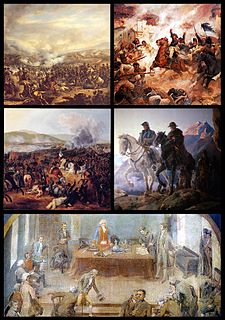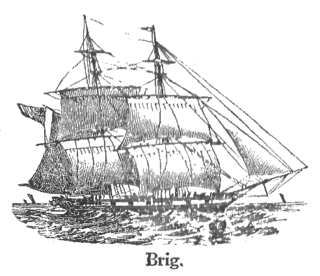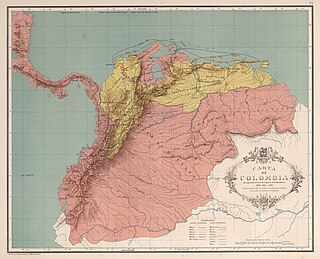 W
WThe Spanish American wars of independence were numerous wars in Spanish America with the aim of political independence against Spanish rule during the early 19th century. These began shortly at the start of the French invasion of Spain during the Napoleonic Wars.
 W
WFrancisco Tomás Morales, was a Spanish military, and the last of that country to hold the post of Captain General of Venezuela, reaching the rank of field marshal during the Venezuelan War of Independence.
 W
WJose Antonio Arizabalo Orobio was a Spanish military, born in Guipúzcoa, still a child at the age of seven he moved with his family to Venezuela, and played an important role in the Spanish American wars of independence.
 W
WThe 1811 Independence Movement, known in El Salvador as the First Shout of Independence, was the first of a series of revolts in Central America in modern day El Salvador against Spanish colonialism and dependency on the Captaincy General of Guatemala. The independence movement was led by prominent Salvadoran and Central American figures such as José Matías Delgado, Manuel José Arce, and Santiago José Celis.
 W
WThe Argentine War of Independence was fought from 1810 to 1818 by Argentine patriotic forces under Manuel Belgrano, Juan José Castelli and José de San Martín against royalist forces loyal to the Spanish crown. On July 9, 1816, an assembly met in San Miguel de Tucumán, declared full independence with provisions for a national constitution.
 W
WBattle of Vargas Swamp was a battle that occurred near Paipa, on July 25, 1819. A joint Venezuelan and Neogranadine army commanded by Simón Bolívar was trying to prevent Spanish forces from arriving at Santafe de Bogotá, which was lightly defended, before they did. Bolívar's army successfully bested the royalist army in spite of the exhaustion of the troops after climbing the Páramo de Pisba, and crossing the swamp. This battle and the next victory over the Spanish by the Boyacá Bridge secured the independence of New Granada.
 W
WBolívar's campaign to liberate New Granada of 1819-1820 was part of the Colombian and Venezuelan wars of independence and was one of the many military campaigns fought by Simón Bolívar. Bolívar's victory in New Granada secured the eventual independence of northern South America. It provided Bolívar with the economic and human resources to complete his victory over the Spanish in Venezuela and Colombia. Bolívar's attack on New Granada is considered one of the most daring in military history, compared by contemporaries and some historians to Napoleon's crossing of the Alps in 1800 and José San Martín's Crossing of the Andes in 1817.
 W
WThe British Legion or British Legions were foreign volunteer units that fought under Simón Bolívar against Spain for the independence of Colombia, Venezuela, Ecuador and José de San Martín for the independence of Peru in the Spanish American wars of independence. Venezuelans generally called them the Albion Legion. They were composed of over seven thousand volunteers, mainly Napoleonic War veterans from Great Britain and Ireland, as well as some German veterans and some locals recruited after arriving in South America. Volunteers in the British Legion were motivated by a combination of both genuine political conviction and mercenary motives.
 W
WThe Cortes of Cádiz was a revival of the traditional cortes, which as an institution had not functioned for many years, but it met as a single body, rather than divided into estates as with previous ones. The General and Extraordinary Cortes that met in the port of Cádiz starting 24 September 1810, "claimed legitimacy as the sole representative of Spanish sovereignty," following the French invasion and occupation of Spain during the Napoleonic Wars and the abdication of the monarch Ferdinand VII and his father Charles IV. It met as one body and its members represented the entire Spanish Empire, that is, not only Spain, but also Spanish America and the Philippines. The Cortes of Cádiz was seen then, and by historians today, as a major step towards liberalism and democracy in the history of Spain and Spanish America. The liberal Cortes drafted and ratified the Spanish Constitution of 1812, which established a constitutional monarchy and eliminated many institutions that privileged some groups over others.
 W
WA caudillo is a type of personalist leader wielding military and political power. There is no precise definition of caudillo, which is often used interchangeably with "warlord" and "strongman." The term is historically associated with Spain, and with Hispanic America after virtually all of that region won independence in the early nineteenth century.
 W
WThe Chilean War of Independence was a military and political event that allowed the emancipation of Chile from the Spanish Monarchy, ending the colonial period and initiating the formation of an independent republic.
 W
WThe Cry of Asencio or Admirable alarm was an 1811 pronunciamiento that took place at the Banda Oriental against the Spanish rule in Montevideo. Made in support of Buenos Aires, which had already ousted the viceroy and established a local government during the May Revolution, it is considered the beginning of the Oriental revolution.
 W
WThe Cuban War of Independence was the last of three liberation wars that Cuba fought against Spain, the other two being the Ten Years' War (1868–1878) and the Little War (1879–1880). The final three months of the conflict escalated to become the Spanish–American War, with United States forces being deployed in Cuba, Puerto Rico, and the Philippine Islands against Spain. Historians disagree as to the extent that United States officials were motivated to intervene for humanitarian reasons but agree that yellow journalism exaggerated atrocities attributed to Spanish forces against Cuban civilians.
 W
WThe Ecuadorian War of Independence was fought from 1820 to 1822 between several South American armies and Spain over control of the lands of the Royal Audience of Quito, a Spanish colonial administrative jurisdiction from which would eventually emerge the modern Republic of Ecuador. The war ended with the defeat of the Spanish forces at the Battle of Pichincha on May 24, 1822, which brought about the independence of the entire Presidencia de Quito. The Ecuadorian War of Independence is part of the Spanish American wars of independence fought during the first two decades of the 19th century.
 W
WThe Foolish Fatherland is the period in the history of Colombia immediately following the declaration of independence from Spain in 1810 and until the Spanish reconquest in 1816. The period between 1810 and 1816 in the Viceroyalty of New Granada was marked by such intense conflicts over the nature of the new government or governments that it became known as la Patria Boba. Constant fighting between federalists and centralists gave rise to a prolonged period of instability that eventually favored Spanish reconquest. Similar developments can be seen at the same time in the United Provinces of the Río de la Plata. Each province, and even some cities, set up its own autonomous junta, which declared themselves sovereign from each other.
 W
WGran Colombia was a state that encompassed much of northern South America and part of southern Central America from 1819 to 1831. At the time, the state was known as Colombia. It included present-day Colombia, mainland Ecuador, Panama, and Venezuela, along with parts of northern Peru and northwestern Brazil. The term Gran Colombia is used historiographically to distinguish it from the current Republic of Colombia, which is also the official name of the former state.
 W
WThe Guayaquil Conference was a meeting that took place on July 26, 1822, in Guayaquil, Ecuador, between José de San Martín and Simón de Bolívar, to discuss the future of Peru.
 W
WInsurgent privateers were private armed vessels recruited by the insurgent governments during the Spanish American wars of independence to destroy Spanish trade and capture Spanish merchant vessels.
 W
WThe Magdalena campaign was a military operation from late 1812 to early 1813 led by the independentists Simón Bolívar and Pierre Labatut against royalists and the crown of Spain in New Granada. The campaign resulted in the revolutionary United Provinces of New Grenada taking control of the Magdalena River, which connects the port city of Cartagena with the interior of Colombia.
 W
WThe military and political career of Simón Bolívar, which included both formal service in the armies of various revolutionary regimes and actions organized by himself or in collaboration with other exiled patriot leaders during the years from 1811 to 1830, was an important element in the success of the independence wars in South America. Given the unstable political climate during these years, Bolívar and other patriot leaders, such as Santiago Mariño, Manuel Piar, José Francisco Bermúdez and Francisco de Paula Santander often had to go into exile in the Caribbean or nearby areas of Spanish America that at the moment were controlled by those favoring independence, and from there, carry on the struggle. These wars resulted in the creation of several South American states out of the former Spanish colonies, the currently existing Venezuela, Colombia, Ecuador, Peru and Bolivia, and the now defunct Gran Colombia.
 W
WThe open cabildo is a traditional Latin American political action for convening citizens to make important decisions. It is comparable to the North American town hall meeting.
 W
WThe Peruvian War of Independence was composed of a series of military conflicts in Peru beginning with viceroy Abascal military reconquest in 1811 in the battle of Guaqui, continuing with the definitive defeat of the Spanish Army in 1824 in the battle of Ayacucho, and culminating in 1826 with the Siege of Callao. The wars of independence took place with the background of the 1780–1781 uprising by indigenous leader Túpac Amaru II and the earlier removal of Upper Peru and the Río de la Plata regions from the Viceroyalty of Peru. Because of this the viceroy often had the support of the "Lima Oligarchy", who saw their elite interests threatened by popular rebellion and were opposed to the new commercial class in Buenos Aires. During the first decade of the 1800s Peru had been a stronghold for royalists, who fought those in favor of independence in Peru, Bolivia, Quito and Chile. Among the most important events during the war was the proclamation of independence of Peru by José de San Martín on 28 July 1821.
 W
WThe royalists were the Latin American and European supporters of the various governing bodies of the Spanish Monarchy, during the Spanish American wars of independence, which lasted from 1808 until the king's death in 1833. In the early years of the conflict, when King Ferdinand VII was captive in France, royalists supported the authority in the Americas of the Supreme Central Junta of Spain and the Indies and the Cortes of Cádiz that ruled in the King's name during the Peninsular War. After the restoration of Ferdinand VII in 1814, royalists supported his claim to rule Spanish America, but were split between those that supported his insistence to rule under traditional law and liberals, who sought to reinstate the reforms enacted by the Cortes of Cádiz.
 W
WThe Ten Years' War (1868–1878), also known as the Great War and the War of '68, was part of Cuba's fight for independence from Spain. The uprising was led by Cuban-born planters and other wealthy natives. On October 10, 1868, sugar mill owner Carlos Manuel de Céspedes and his followers proclaimed independence, beginning the conflict. This was the first of three liberation wars that Cuba fought against Spain, the other two being the Little War (1879–1880) and the Cuban War of Independence (1895–1898). The final three months of the last conflict escalated with United States involvement, leading to the Spanish–American War.
 W
W